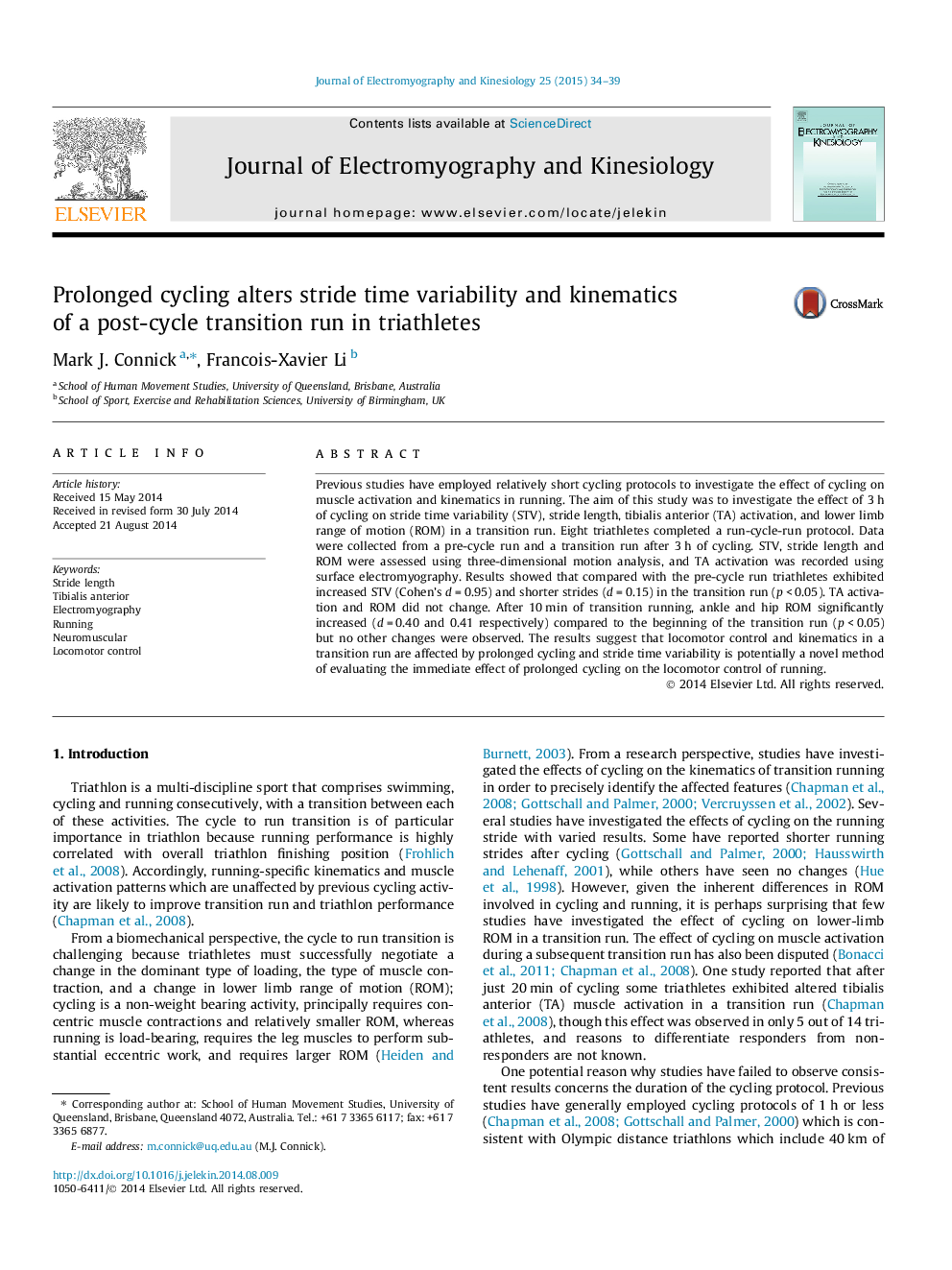| Article ID | Journal | Published Year | Pages | File Type |
|---|---|---|---|---|
| 6210346 | Journal of Electromyography and Kinesiology | 2015 | 6 Pages |
Previous studies have employed relatively short cycling protocols to investigate the effect of cycling on muscle activation and kinematics in running. The aim of this study was to investigate the effect of 3 h of cycling on stride time variability (STV), stride length, tibialis anterior (TA) activation, and lower limb range of motion (ROM) in a transition run. Eight triathletes completed a run-cycle-run protocol. Data were collected from a pre-cycle run and a transition run after 3 h of cycling. STV, stride length and ROM were assessed using three-dimensional motion analysis, and TA activation was recorded using surface electromyography. Results showed that compared with the pre-cycle run triathletes exhibited increased STV (Cohen's d = 0.95) and shorter strides (d = 0.15) in the transition run (p < 0.05). TA activation and ROM did not change. After 10 min of transition running, ankle and hip ROM significantly increased (d = 0.40 and 0.41 respectively) compared to the beginning of the transition run (p < 0.05) but no other changes were observed. The results suggest that locomotor control and kinematics in a transition run are affected by prolonged cycling and stride time variability is potentially a novel method of evaluating the immediate effect of prolonged cycling on the locomotor control of running.
